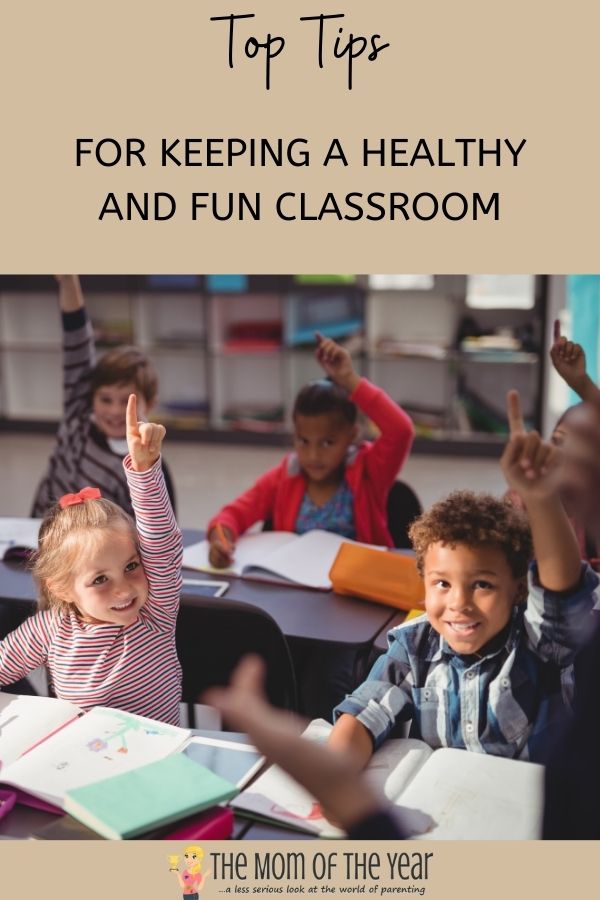Winter in a classroom can feel long and tedious, so it is vital to look after the health of your students while keeping learning fun. There are many ways to achieve this without turning the class environment into a clinical one, especially as keeping healthy involves focusing on more than just physical health and mental health. Incorporating a few simple tips for keeping a healthy and fun classroom routine will set you and your students up for an enjoyable winter season with as few disruptions to learning as possible.
Head outside.
Where possible, taking children outside to learn is a brilliant way of giving children space while also allowing them to make lessons practical and fun. Taking children outside opens up exciting new opportunities for learning in a natural setting, allowing for time in the fresh open air and promoting good physical and mental health. What a fantastic opportunity to discuss how and why the leaves change color and then fall off as autumn turns into winter or the different states of water as puddles freeze and snow begins to fall. A hands-on approach like this reinforces the learning that happens inside the classroom while capturing children’s attention in a whole new way.
Keep it clean.
Obviously, the bulk of your classes day will still take place inside your classrooms. While measures such as keeping windows open for ventilation will significantly reduce the spread of airborne disease, other measures will help the safety and sanitation of the classroom and those within it. Even before Covid-19 complicated our lives so much, the thought of a norovirus outbreak was every parent and teacher’s nightmare, and these diseases have not left us. So taking extra care with cleanliness within the classroom setting is still important to stop the spread of many nasty pathogens that can close a class down for several days. The good news is a classroom can be a clean place without being soulless and sterile with the considerate placement of cleaning supplies such as well sign-posted hand washing facilities and easy access to hand sanitizer on doors.

Make a happy classroom.
Making the classroom and other learning environments welcoming and nurturing encourages children to feel welcome and comfortable and, therefore, is a good place for learning. Boosting mental health is equally important as physical health, as, without good mental health, a young person will not be able to settle down and learn much of anything effectively. In contrast, a young person whose mental well-being has been looked after will be better able to deal with small worries and have the required headspace to learn all sorts of new things. How a classroom is set out to achieve this will, of course in part, depend on the age of the children in your class, but some ideas can carry through at any age; for example, a quiet corner is as helpful to a tired five-year-old as it is to an overwhelmed ten-year-old.
A happy classroom is an inclusive classroom.
Aiming to make your classroom inclusive for all students will do wonders for the overall general mood and attainment of those within. As various learning difficulties are better recognized and more attention is paid to mitigating the effects of difficult home life for those unfortunate enough to be in that situation, educational settings have to change how these challenges are managed within the mainstream school setting. In the past, a disruptive child would have been labeled as challenging and often written off from a young age; disruption can be kept to a minimum by addressing the root cause of challenging behavior. That child’s confidence and feeling of self-worth will increase, allowing them to progress with their education and emotional growth. If you have a child with sensory processing issues in your class, for example, look at how the classroom is set up and make changes that can help them, such as a quiet space or not having garishly bright displays that can cause sensory overload.
Include the child or children in the planning process to give you a better understanding of their individual needs and boost their self-esteem.
So you can see that by taking simple steps with the physical environment in and around your classroom, it is possible to blend keeping your students physical and mental health in good shape. These tips For keeping a healthy and fun classroom, and an environment that is fun to learn in, keeps young minds engaged and excited to learn every day.
Latest posts by Meredith (see all)
- Disney World in December: A Real Mom’s Guide to Cutting the Overwhelm and Finding the Magic - October 15, 2025
- Not “Bouncing Back” After Pregnancy? You’re Not Alone! - August 9, 2025
- Carpal Tunnel Syndrome: 3 Methods to Ease the Pain and Discomfort - June 30, 2025


Leave a Reply